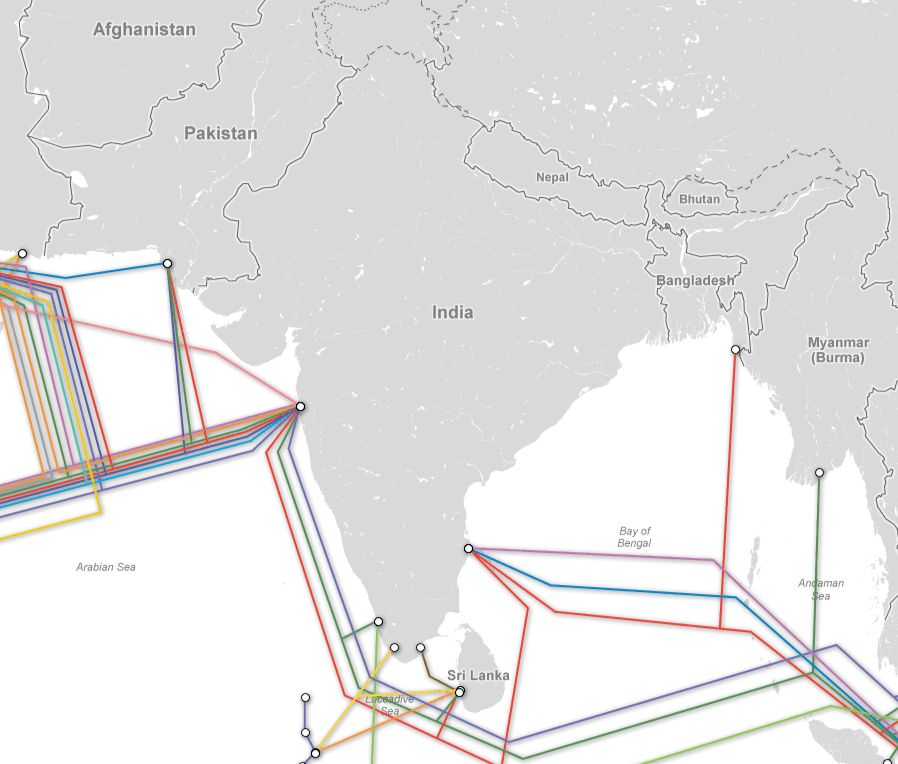- December 16, 2016
- Posted by: Surender Kumar
- Category: Internet Connectivity
Internet Connectivity of India with rest of world
More than 99% of the internet traffic relies on high quality fiber optic cables connecting various countries. Only a fraction of the traffic goes through satellites. These cable networks are laid and maintained by various governments and large companies. Such projects are usually undertaken by multiple companies due to the large cost of maintenance & configuration.

There are three tiers which differentiates the size of the network held by a company. These are the companies which have a global network connecting fiber optic cables around the world. They will be able to provide access to any destination without paying fee. Their network is actual backbone of internet. These companies have regional networks and are usually connected to one or more tier-1 networks. They pay a fee to access the network of tier-1 companies. These are the Internet Service Providers (ISPs) who provide internet connectivity to end users. ISPs are the last tier connecting the internet to the end users. The place where international cables connect to the land is known as landing station. India is connected to the world via 4 landing stations. These landing stations are Mumbai, Chennai, Cochi, and Thoothukudi. All the international internet traffic goes through these stations.
- Tata Communications: Tata communications is owning 3 landing stations in Mumbai, Chennai and Cochin. They are the only Tier-1 company from India.
- Bharti Airtel: Bharti airtel is owning 2 landings stations in Chennai and Mumbai.
- Reliance Globalcom: Reliance Globalcom is owning 1 landing station in Mumbai.
- Sify Technologies: Sify Technologies is owning 1 landing station in Mumbai
- BSNL (Bharat Sanchar Nigam Limited): BSNL is owning 1 landing station in Thoothukudi connecting to Sri Lanka.
On the eastern side, India is connected to Singapore at Chennai. On the western side India is connected to UAE at Mumbai. On southern side it is connected to the cables coming from south Africa. Handing over of traffic from one network to another is called peering. There is a non-profit government organization in India called National Internet Exchange of India (NIXI) which allows Indian ISPs to use each other’s network in an efficient manner rather than using foreign servers. This also increases the quality of service for the consumers.


